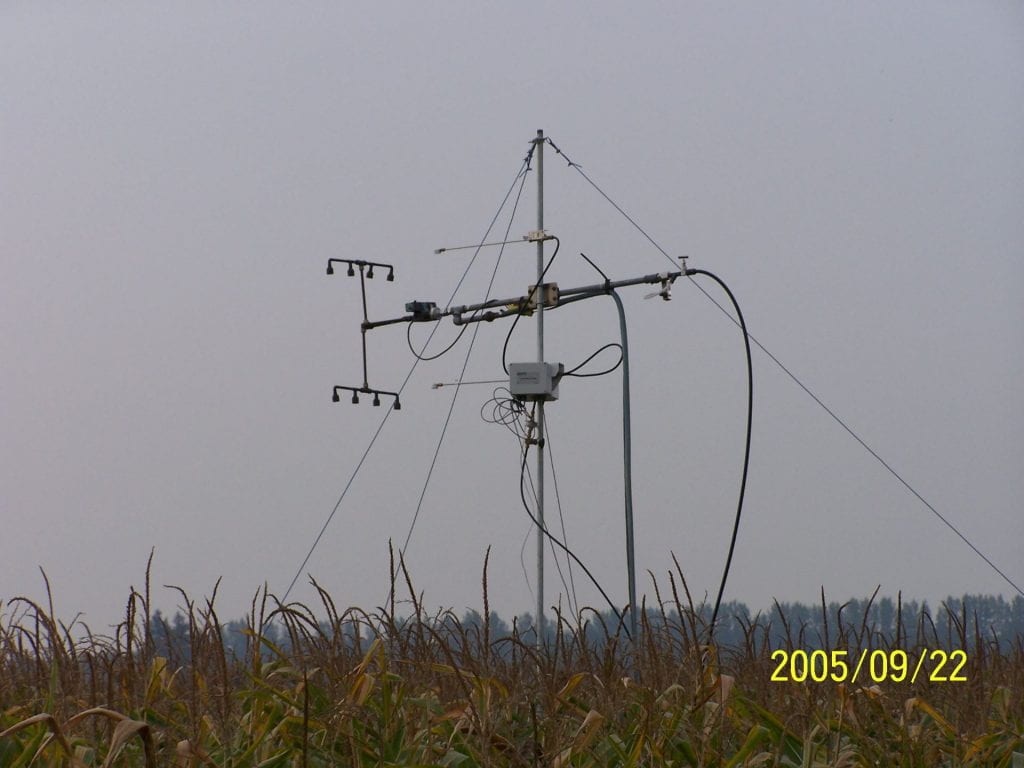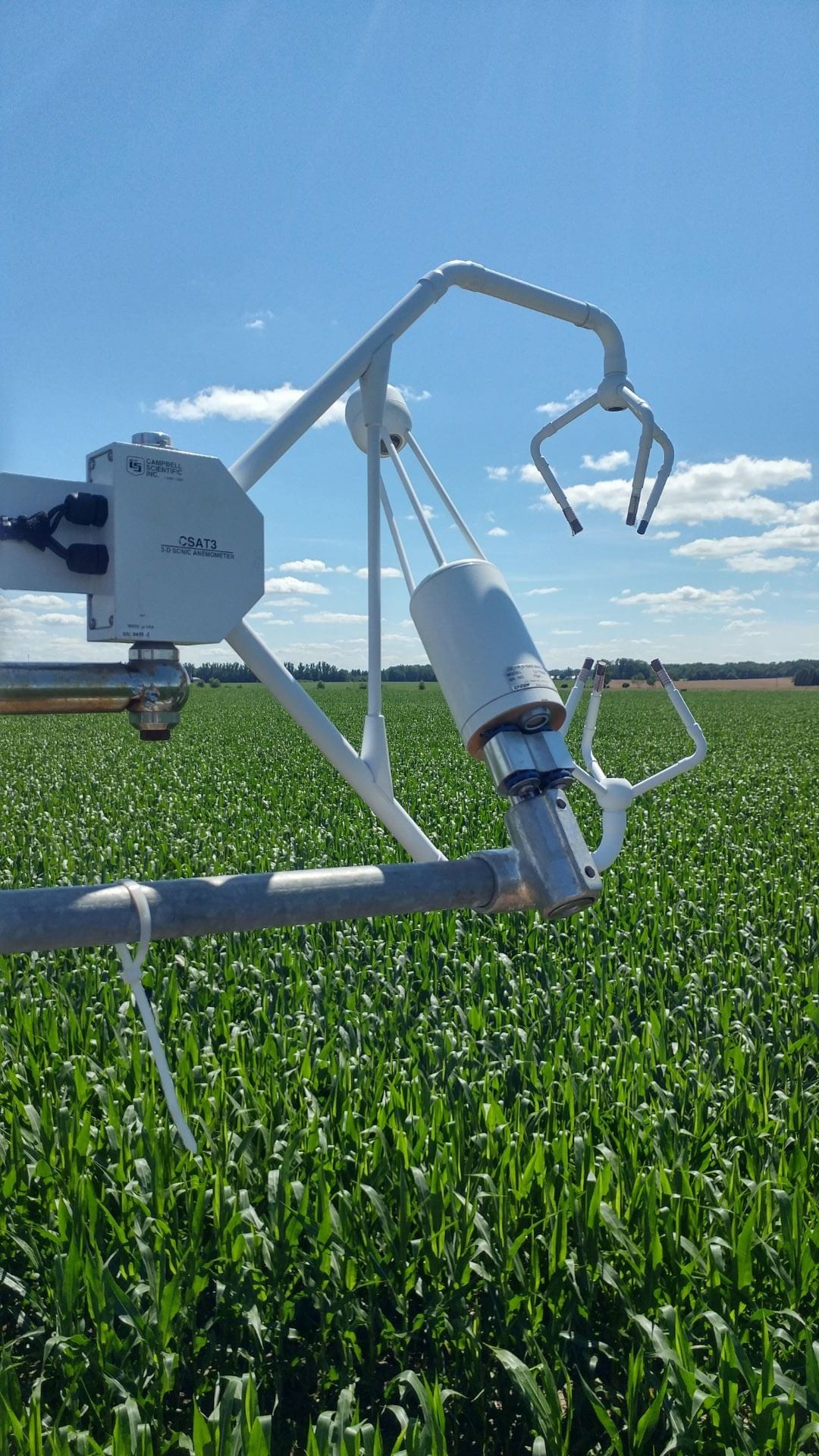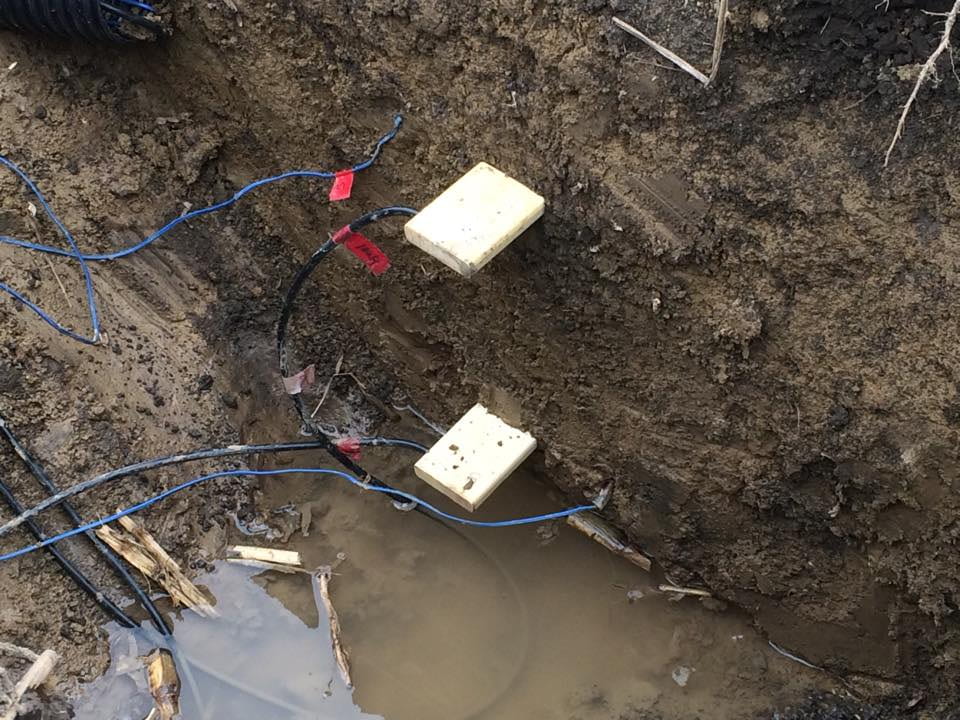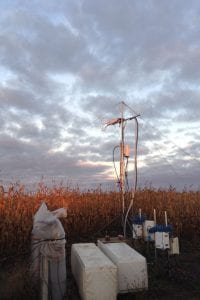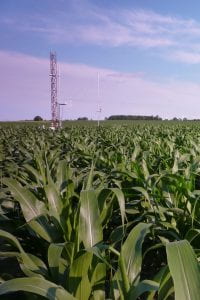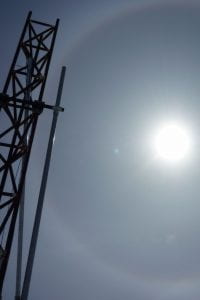Greenhouse gas (GHG) emissions from agricultural lands are highly variable. Their timing and magnitude depend on management, soil, and climatic conditions. The multi-plot flux gradient infrastructure at the Elora Research Station has provided year-round, quasi-continuous, non-intrusive micrometeorological measurements to fully capture nitrous oxide (N2O) and carbon dioxide (CO2) emissions from four 4-ha plots since 2000. The experimental design has allowed for direct comparisons of N2O and CO2 emissions of a variety of different agricultural practices since the four plots are subject to the same climatic and soil conditions. Information from these projects guide policies and strategies aimed at reducing agricultural GHG emissions.
- We use a tunable diode laser to estimate N2O and CO2 (Campbell TGAS100A) for flux-gradient measurements.
- The eddy-covariance method uses 3-D Sonic Anemometers (Campbell CSAT3) and Open Path CO2 Gas Analyzer (Li-7500, LI-COR Biosciences).
- We also use a variety of soil probes and samples to determine properties like the temperature, moisture, or nutrient content of the plots.
- A weather station next to the plots continually collects atmospheric data.
Projects
Current Projects
2018 – Present
One of the proposed strategies to mitigate CO2 emission from agro-ecosystems is by increasing terrestrial uptake of CO2 through crop diversification. Diversified corn-soybean crop rotations extend the amount of time that land is under plant cover, and may offset carbon losses that would otherwise occur during the spring and fall periods. The ongoing study at the Elora Research Station seeks to compare the net carbon balance of a simple rotation (corn–soy–soy) to a diversified rotation that includes winter wheat and cover crops (corn/cover crops-soy-winter wheat/cover crops). CO2 exchanges are continuously being measured for each of these rotations using the eddy covariance method. This improved understanding of carbon dynamics will reveal the potential role of diversified farming in reducing annual CO2 emissions.
Cover crops also have the potential to reduce the extent of soil freezing, which has been shown to reduce N2O emissions. However, after cover crops are terminated and fertilizer is applied for the cash crop, N2O emissions can intensify from leftover soil nitrogen. To counter this, nitrification and urease inhibitors (NUIs, which slow nitrogen transformations in the soil) can be applied after cover crop termination. A field study is underway at the Elora Research Station to evaluate if the use of NUIs can reduce N2O emissions due to cover crop use.
Can application of enhanced efficiency fertilizers at planting reduce N losses from grain corn production in Ontario?
2015 – 2018
The goal of this study was to compare the nitrogen use efficiency of current fertilizer practices with alternatives such as nitrification inhibitors and application timing.
Treatments:
- The continuous corn plots were treated with half urea broadcast and incorporated at planting (plots 1 and 2) and half urea-ammonium nitrate injected (plots 3 and 4).
- Plots 2 and 4 also each used a nitrification and urease inhibitor (NUI).
Publications: 20181, 20191, 20201,2.
Data available: Can application of enhanced efficiency fertilizers at planting reduce N losses from grain corn production in Ontario?
Evaluating and comparing greenhouse gas emissions from annual and perennial dairy feed cropping systems amended with dairy manure
2011 – 2015
Perennial crops can deliver a wide range of ecosystem services compared to annual crops, including a potential role for perennial systems to mitigate soil N2O emissions. To test this hypothesis, two manure application options commonly used by farmers for each crop were studied: injection vs. broadcast application for the perennial; fall vs. spring application for the annual.
Treatments:
- Plots 1 and 2 had a perennial grass (hay), while the others were cropped continuously with corn.
- The two hay plots had a spring manure application by spreading and 10-cm depth injection.
- In plots 3 and 4, the corn received a fall and spring application of manure, respectively.
- In both corn plots, the manure was incorporated into the soil, and conventional tillage was used.
Publications: 20151, 20161, 20171,2,3,4.
Data available: Evaluating and comparing greenhouse gas emissions from annual and perennial dairy feed cropping systems amended with dairy manure.
Studying the interaction of crop management practices and weather and the subsequent effect on nitrous oxide emissions
2000 – 2005
This study compared crop productivity, nitrogen uptake from fertilizer and soil sources, and nitrogen losses between conventional and best management practices. A corn-soybean-winter wheat rotation was used to examine the fate of fertilizer with each practice.
Treatments:
- Conventional tillage practices were used in plots 1 and 4.
- Conventional treatments consisted of disking and granular urea broadcast at planting (for corn), at the start of growth (winter wheat), and not applied to soybeans.
- The combination of best-management practices (BMPs) on plots 2 and 3 were: no-tillage, a side-dress injection of fertilizer (rate based on soil samples), and the inclusion of a cover crop when possible.
Publications: 20071,2, 20081,2, 20091, 20101,2, 20161,2.
Data available: Studying the interaction of crop management practices and weather and the subsequent effect on nitrous oxide emissions, 2000-2005.
Other Publications
Assessment of random errors in multi-plot nitrous oxide flux gradient measurements (2017).
Looking for these data? Contact us.
We are part of the Ameriflux network of research sites.
Plot Cameras


Here you can check out more images from Plot 1 and Plot 3.
Plot Information
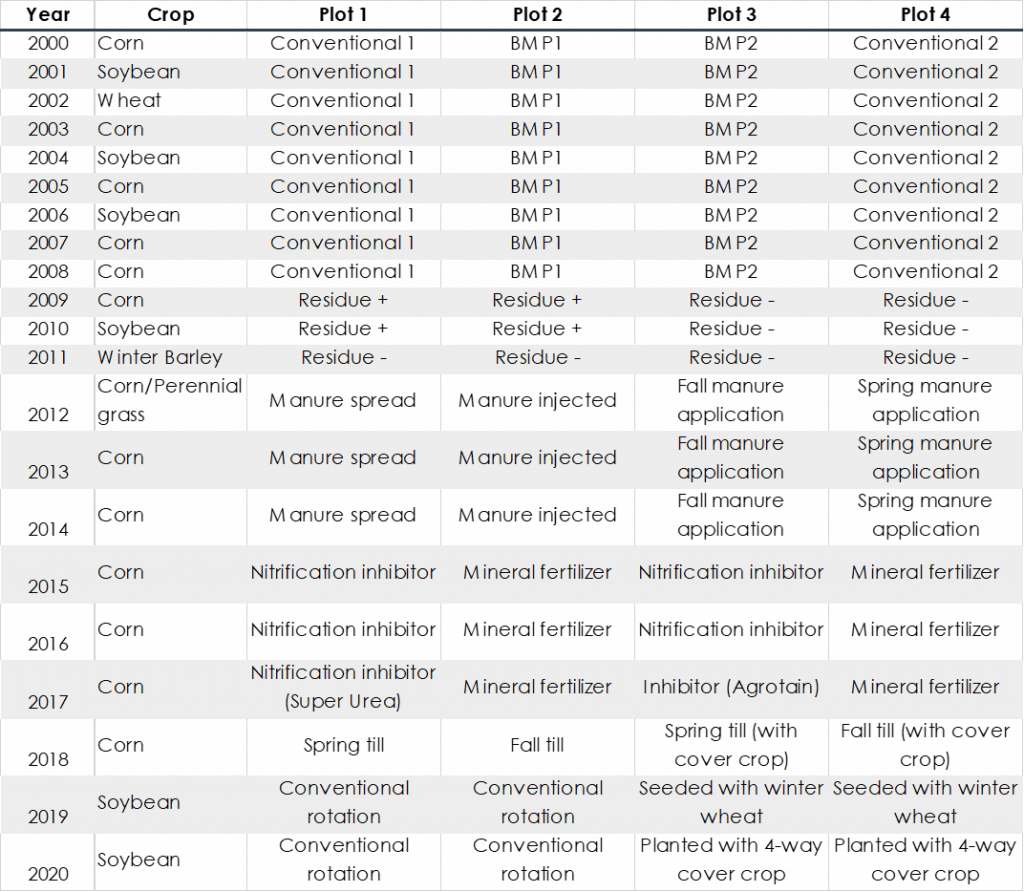
Acknowledgements
This project is funded in part by Food From Thought, Fertilizer Canada, and the Ontario Ministry of Agriculture, Food and Rural Affairs (OMAFRA), through the Ontario Agri-Food Innovation Alliance.
We acknowledge the support of the Natural Sciences and Engineering Research Council of Canada (NSERC).
Nous remercions le Conseil de recherches en sciences naturelles et en génie du Canada (CRSNG) de son soutien.



